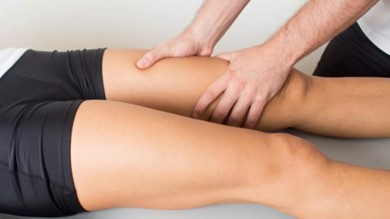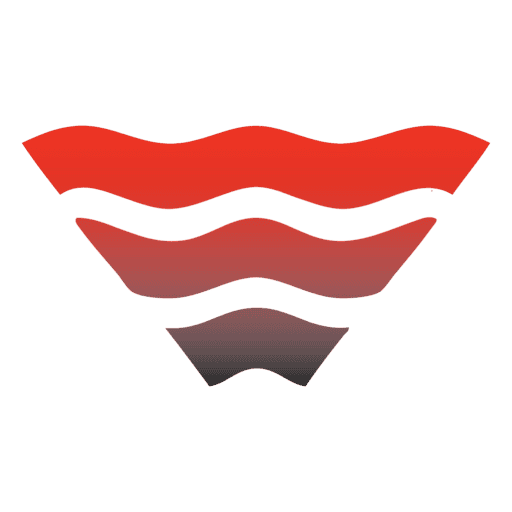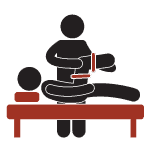Manual and manipulative therapy services at Alliston and Tottenham clinics
Contact UsPhysiotherapists can partake in specialized training through the Orthopaedic Division of the Canadian Physiotherapy Association to further develop and fine-tune their hands-on skills. Depending on the level of training, a physiotherapist can become a Fellow of the Canadian Academy of Manipulative Physiotherapists (FCAMPT), which is internationally recognized.
What are some examples of manual therapy techniques?

- Mobilization: this includes gentle movements and stretching techniques applied to joints. This typically is used to improve the range of motion, reduce stiffness, reduce pain and promote joint health.
Joint mobilization: this includes techniques involving the therapist applying a controlled pressure an movement to a joint. This typical is used to reduce pain, improve joint range of motion and restore normal joint function.
- Manipulation: manipulation is a form of joint mobilization that involves a high velocity, low amplitude thrust to a specific joint. Similar to joint mobilizations, it is used to reduce pain, improve joint range of motion and restore normal joint function.
- Passive stretching: a technique that involves stretching a tightened or shortened muscle and holding it for up to 30 seconds. The goal of this technique is to improve the flexibility of the targeted muscle and increase the joint range of motion.

- Soft tissue techniques: this can involve many different techniques including massages, myofascial release, trigger point release, cupping, and soft tissue release. This is typically used to reduce pain, muscle tightness and tension, as well as improve muscle dysfunction.
- Muscle energy techniques: this technique typically involves the active participation of the patient in strengthening and stretching muscles. It is guided by the therapist with engaging in contracting and relaxing different muscle groups to improve flexibility, joint mobility and muscle function.
- Manual traction: manual traction involves applying a controlled pulling force to a joint (i.e. the spine, the knee etc.). The purpose of this technique is to decompress joints, relieve pressure of nerves, reduce pain and increase joint mobility.
Manual Therapy Benefits

Manual therapy offers several benefits for individuals suffering from musculoskeletal issues, injuries and other functions. Here are some of the key benefits of manual therapy:
1. Pain relief
Depending on the condition, various manual therapy techniques may be used to stimulate your nervous system with the goal of reducing your pain. More specifically, hands-on techniques can stimulate sensory receptors in the skin, muscles and joints leading to the release of endorphins and other natural pain-relieving chemicals in the body.
2. Improved range of motion
By targeting tight muscles, stiff joints and restricted tissue, manual therapy can work to relieve these structures. This will allow for better movement and function in the affected area.
3. Improve joint function
The use of joint mobilizations and manipulations can help to address joint dysfunctions to restore normal joint mechanics. When proper joint mechanics are in place, it will lead to better overall joint health and function.
4. Enhance blood flow
Various hands-on techniques will promote blood flow to the affected area, delivering oxygen and nutrients and removing metabolic waste products. This will ultimately reduce inflammation, promote tissue healing and reduce your pain.
5. Reduce nerve compression
Techniques like joint mobilizations and traction can help reduce nerve compression on pathological nerves. The cause of pathological nerves can arise from tight muscles or restricted joints. Reducing nerve compression will help with symptoms such as radiating pain, tingling and numbness.
6. Enhanced sports performance
Athletes will often benefit from manual therapy as these techniques aim to improve flexibility, joint range of motion, and muscle function. Athletes may also benefit by reducing the risk of injury.
7. Psychological benefits
The hands-on nature of manual therapy can help to promote relaxation, reduce anxiety, reduce stress, and improve overall mood. It will also help to build a therapeutic relationship and improve trust with your therapist.
What are common conditions that manual therapy will help treat?
- Back pain
- Disc herniations
- Spinal stenosis
- Lumbar strain
- Sciatica
- Neck pain
- Disc herniations
- Spinal stenosis
- Neck strain
- Shoulder injuries
- Rotator cuff injuries
- Tendinopathies
- Dislocations and subluxations
- Pathological joints
- Arthritis
- Fractures
- Joint impingements
- Sports injuries
- Sprains
- Strains
- Post-surgical
- Joint replacements
- Soft tissue repairs
- Adhesive scar tissue
- Headaches
- Chronic pain
- Fibromyalgia
- Chronic low back pain
- Arthritis
How do I know if manual therapy is right for me?
From the assessment with your therapist, they will determine with you if manual therapy is an appropriate treatment technique. Manual therapy takes both an individualized and evidence-based approach. This means that the techniques used will be tailored specifically to your needs and goals. Your physiotherapist will develop with you a treatment plan involving various treatment techniques, so you can get better faster. With manual therapy being evidence-based, this means scientific research has been conducted to evaluate its effectiveness. Research has proven the benefits of manual therapy and the effectiveness of treating patients suffering from pain.
Contact our physio clinic in Alliston or Tottenham to find out how we can help you.
MANUAL AND MANIPULATIVE THERAPY
Our therapists use a variety of hands on techniques to both accurately assess and efficiently treat patients. Specialized training through the Orthopaedic Division of the Canadian Physiotherapy Association (orthodiv.org) allows for accurate diagnosis and faster recovery. Fellows of the Canadian Academy of Manipulative Physiotherapists (FCAMPT) have taken extensive post-graduate training and have received international recognition in hands on techniques.
manippt.org
CONCUSSION MANAGEMENT
At South Simcoe Physiotherapy we have training in the Shift Concussion Management Program (shiftconcussion.ca). Using this program as a basis, we thoroughly assess the individual systems often effected in a concussion using a variety of tests, as well as cognitive tools such as imPact. Once an accurate assessment has been performed, we develop a multi-faceted rehabilitation strategy to return the individual to optimal function.
PELVIC HEALTH
massage therapy
Massage therapy is a form of hands in treatment that affects the body’s soft tissues such as the muscles, connective tissue, ligaments, tendons and joints. Massage therapy can have therapeutic effects on the muscular, circulatory, and nervous systems. For more information on Registered massage therapy please visit: www.rmtao.com
acupuncture
Acupuncture is rooted in Traditional Chinese Medicine and uses tiny needles which are inserted into various points in the body. Acupuncture stimulates the body’s natural healing mechanisms and is effective in treating a variety of conditions including headaches, back pain, neck pain, various overuse and sports injuries. Our therapists have training in acupuncture through Acupuncture Canada ( https://www.acupuncturecanada.org)
RUNNING ASSESSMENT / GAIT ANALYSIS
Gait analysis and Running Assessments can be useful in determining biomechanical irregularities during either walking or running that are either causing or are caused by a certain condition or injury. Gait analysis can also help to identify inefficiencies that may be reducing performance in runners and perhaps predisposing or contributing to injury.
We use multiple tools to analyze a person’s gait. First, we use our physiotherapy backgrounds and knowledge of biomechanics. By observing someone walking/running/using the treadmill (and perhaps recording them) we can often identify these major faults. A biomechanical exam can also aid in this process through identifying structural limitations, muscle weakness and tone, and a variety of other potential faults. Finally, using training from courses such as those taught at The Running Clinic https://therunningclinic.com/en, can help to consolidate all of this information while allowing us to make recommendations on items such as footwear, training schedules, and other information relevant to your specific situation.
IMS/IDN
Intramuscular Stimulation and Integrated Dry-Needling. Both IMS and IDN are forms of dry needling where an acupuncture needle is inserted into a taut band in a shortened muscle or near the nerve root in order to cause a reflex relaxation of the muscle, a micro trauma to stimulate natural healing and create an action potential to restore normal nerve conduction. This technique can be extremely useful to treat chronic pain, myofascial pain syndromes, many sports injuries, and overuse injuries. For more information visit: www.istop.org
exercise prescription
Exercise is an essential part of all rehabilitation programs. In order to restore normal muscle length and strength, correct biomechanical faults and return to function, exercises need to be specifically tailored to suit individual needs.
custom bracing
shockwave therapy
Shockwave is a non-invasive way to treat many muscular, tendinous, ligamentous, and bone problems that lead to pain and loss of function. Briefly stated it uses strong energy pulses to stimulate increased blood flow and metabolism allowing regeneration of damaged tissue. A phenomenon called “micro-cavitation” occurs where “bubbles’ expand and burst creating a force that penetrates damaged tissue and stimulates cell reparation. Shockwave is especially effective in treating issues that have been unresponsive to other conservative methods.
VIDEO AND TELEPHONE CONSULTATIONS
At a time when social distancing is necessary, we are pleased to be able to offer our exceptional care in an alternative method. Video consultations (think FaceTime or Skype) can be an effective method to assess and treat musculoskeletal and other physiotherapy appropriate impairments. A thorough analysis can be conducted by performing a detailed subjective, observing individual movements, performing simple tasks and special tests, and evaluating the environmental factors which are aggravating the condition. From there, our therapist can devise an appropriate treatment plan including self management strategies, modifications, and exercises appropriate to address your condition. The therapist is easily able to demonstrate the exercises and observe you performing them, and can even send you video demonstrations of the exercises. For those that are unable to access reliable internet, or do not regularly use a computer, telephone consults are also an option.
No doctor's referral is necessary and these sessions are covered by most insurers
NATUROPATHY
Frequently Asked Questions
What is physiotherapy?
Simply stated, physiotherapy is the treatment of deficits and disease without the use of medications. Physiotherapy is useful for the majority of injuries and ailments one might suffer. The goal of our physiotherapists is to reduce your symptoms and allow you to return to function in a timely manner. If you are unsure if your condition is appropriate for physiotherapy, please feel free to contact us.
How do I pay for your services?
Does OHIP cover physiotherapy?
Do I need a doctor’s referral to come and see you?
What do I need to wear for my assessment?
Will my private insurance cover the cost of this treatment?
What if my injuries are as a result of a motor vehicle accident or workplace injury?
- Date of accident
- Claim number
- Adjuster’s name and contact information
- Private health insurance information (if applicable)
- Area of injury
We are able to direct bill your motor vehicle insurance, but please note that all of your private health insurance must be used prior to accessing your motor vehicle insurance. These rules are mandated by the Financial Services Commission of Ontario and not our clinic.
Workplace injury (WSIB): we often treat people as a result of a workplace injury, however, we do not bill WSIB directly. If your injury is part of a WSIB claim, you are expected to pay just as other clients and then submit your invoices to WSIB.


